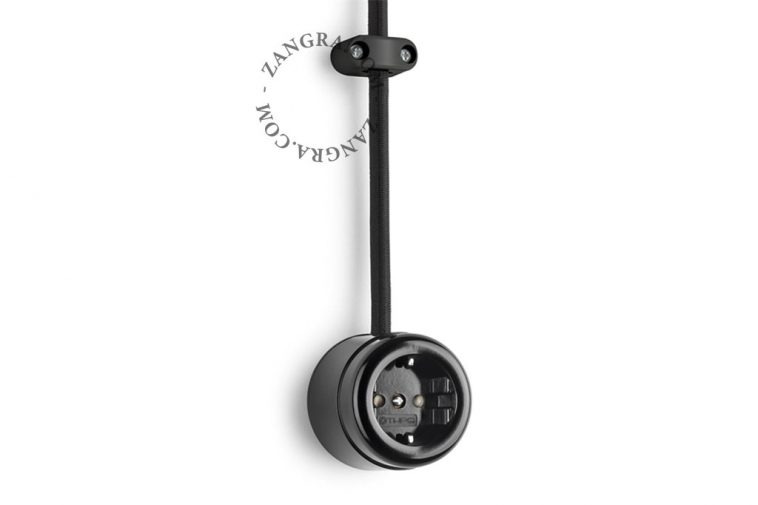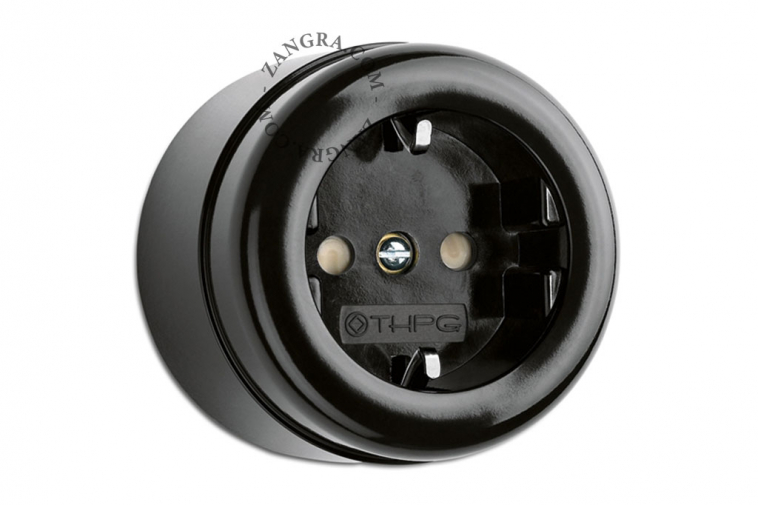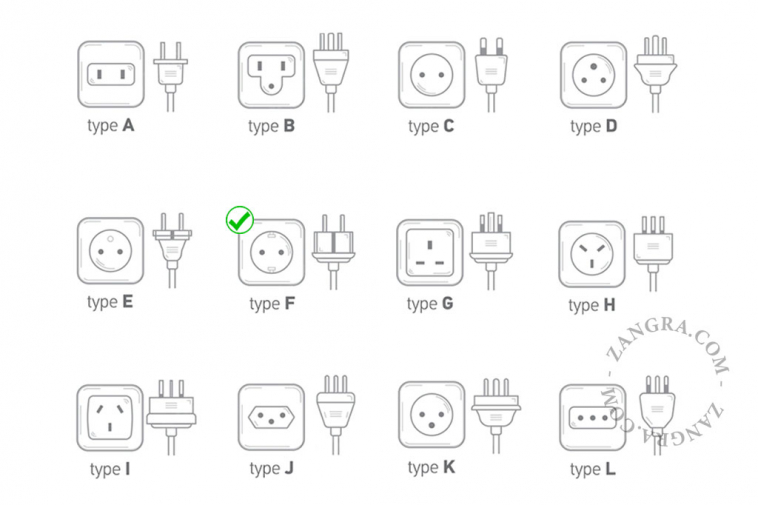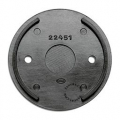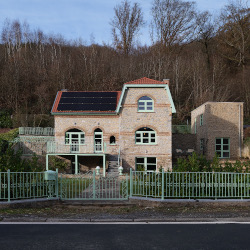surface mount black bakelite socket - type F
switch.002.009
€27.00
x
x
Collection of surface-mounted bakelite switches and outlets
This collection of surface-mounted sockets and switches is a reproduction of historical models that have been brought up to current safety standards.The 2.5 mm thick bakelite monoblock case guarantees you a superior quality product. Indeed, bakelite is a solid, lightweight, highly heat-resistant and electrically non-conductive material.
Please note that during assembly, the wiring and fixing from the inside is done directly on your wall. When mounting on a flammable support, be sure to close the back of the bakelite block with a mounting plate sold separately. It must then be drilled at the points indicated by the cutting line.
Do not use an electrical screwdriver
Do not use electrical screwdrivers when installing bakelite items. We recommend to first drill a hole in the wall, fit the right plugs inside and use a manual screwdriver to fix the screws in place. Be especially careful during the final tightening of the screws.
This socket is equipped with a childproof lock.
What is a Type F outlet?
This outlet is a type F outlet. This system is used in the Netherlands, Germany, Austria, Sweden, Norway, Finland, Portugal, Spain, Turkey and Eastern Europe, as well as some African, Asian and South African countries.The most common outlets in Europe are type F outlets, also called Schuko (from German Schutzkontakt). Type F outlets are similar to type C, but with two metallic clips on top and below to earth the appliance. We also called this earthing or grounding. This kind of outlet is round with two notches on the left and right side.
There are 15 different systems in the world for home applications. If you want to know what the standard type is in your country, check out here.
What is bakelite?
Functional and aesthetic, bakelite is the ideal material for electrical engineering.Developed at the beginning of the 20th century by the Belgian chemist Leo Baekeland - from whom the term derives its name - bakelite is known for its heat-resistant properties, as well as its stability and high electrical insulation. Until the 1960s, bakelite participated in the elaboration and development of many technical innovations - such as the telephone and radio. For financial reasons, however, bakelite was gradually replaced by thermoplastic, which was less dense but also of a less comparable quality.
Today, in order to offer a quality alternative to thermoplastics, some factories located on the European continent are relaunching the production of bakelite, using traditional moulds and tools.
| SKU | switch.002.009 |
| EAN code | 4051094842003 |
| Material | Bakelite |
| Colour | Black |
| Depth | 4,9 cm |
| Diameter | Ø 6,2 cm |
| Origin | Europe |
| Marking | CE / VDE |
| Voltage | AC 250 V |
| Protection marking | IP20 |
| Amperage | 16 A |
| Protection's indice | |
